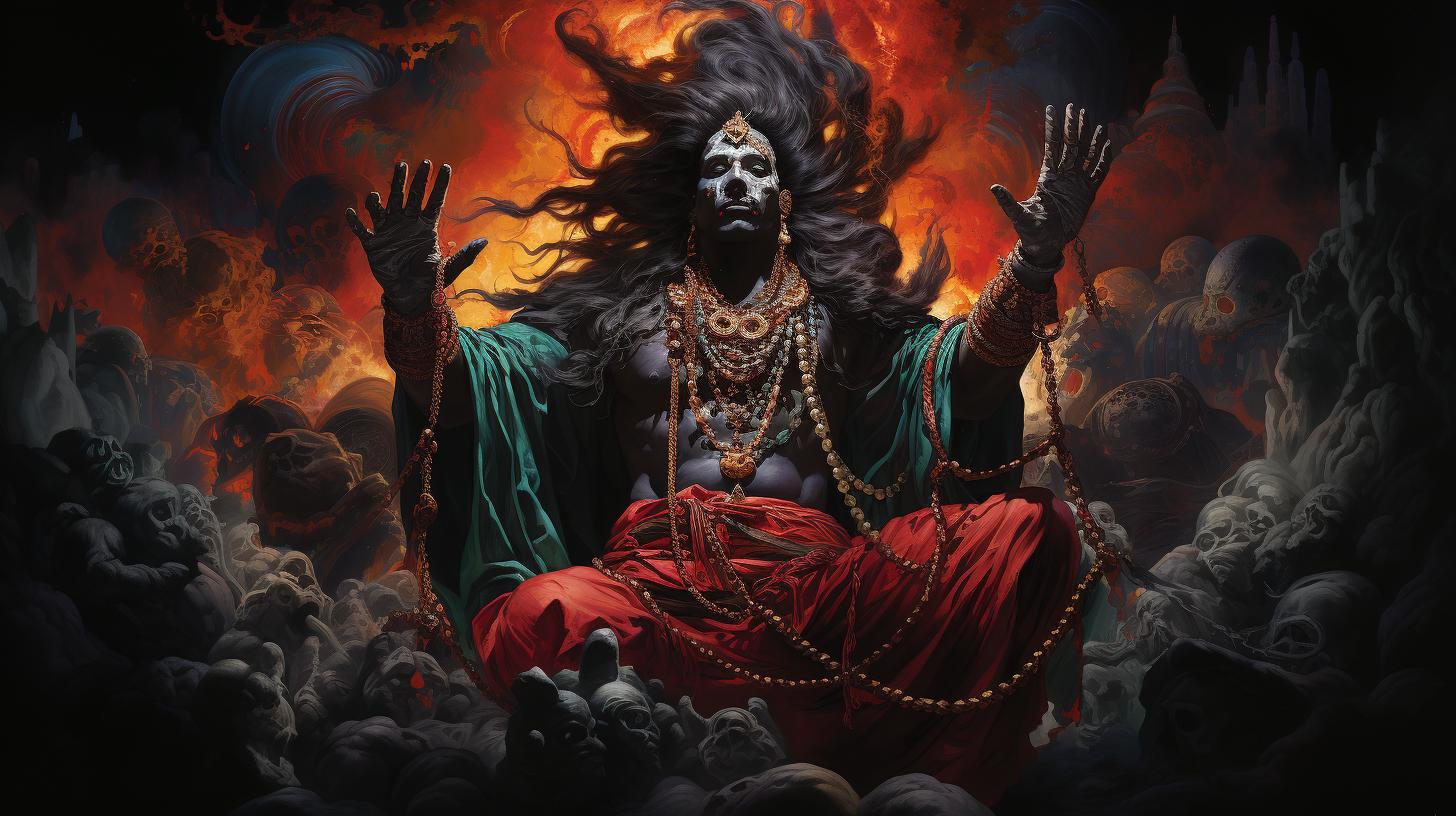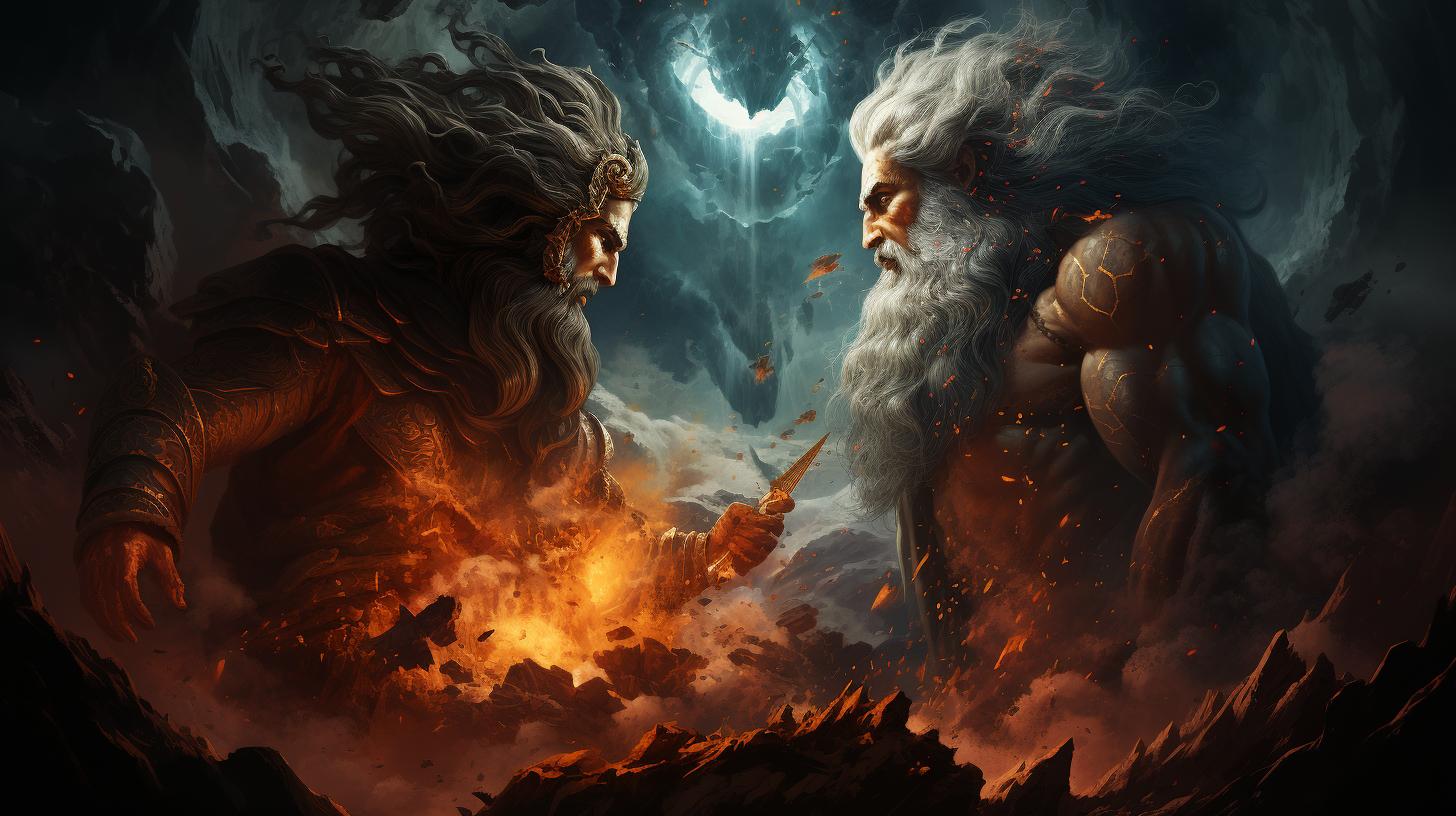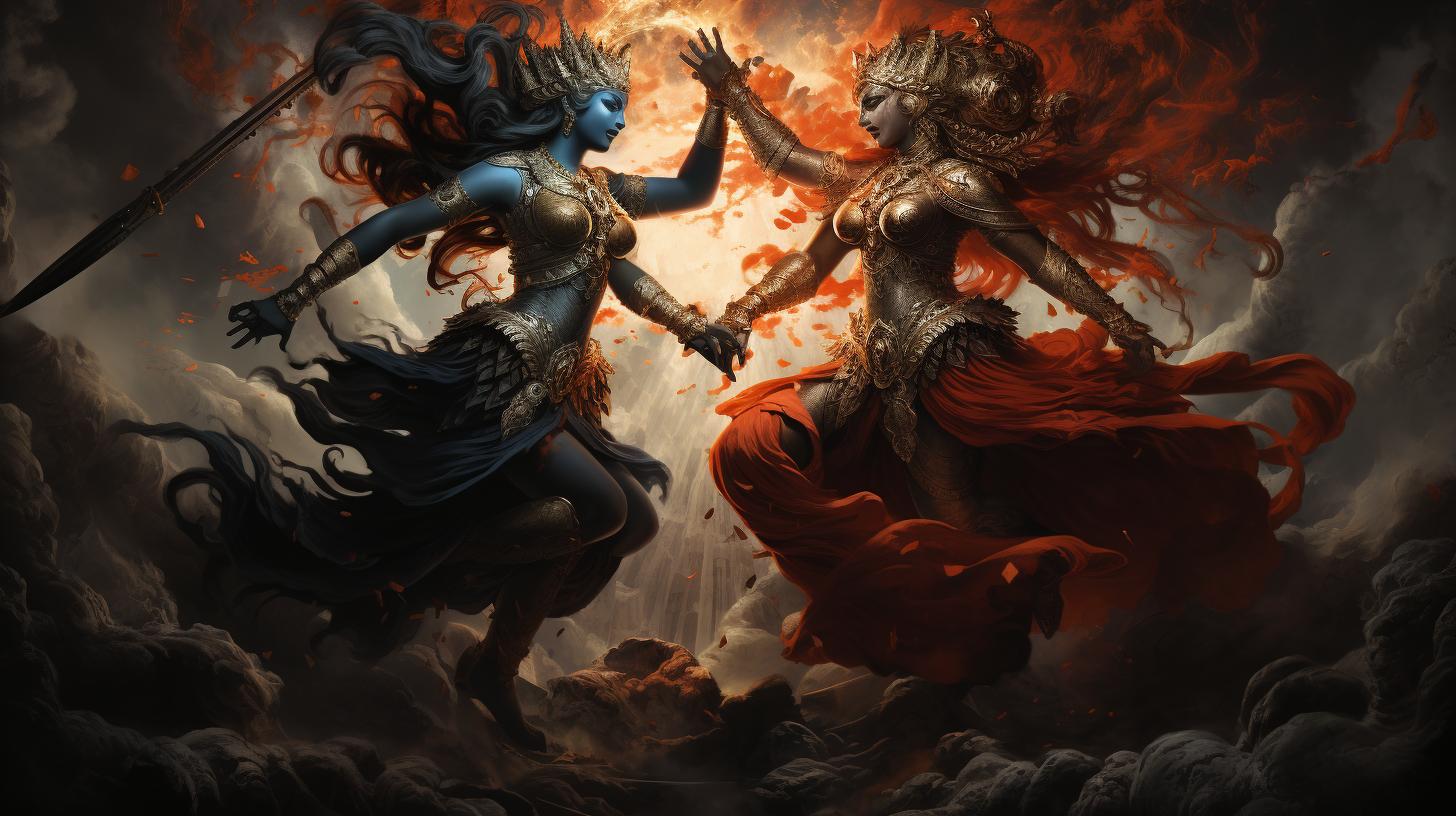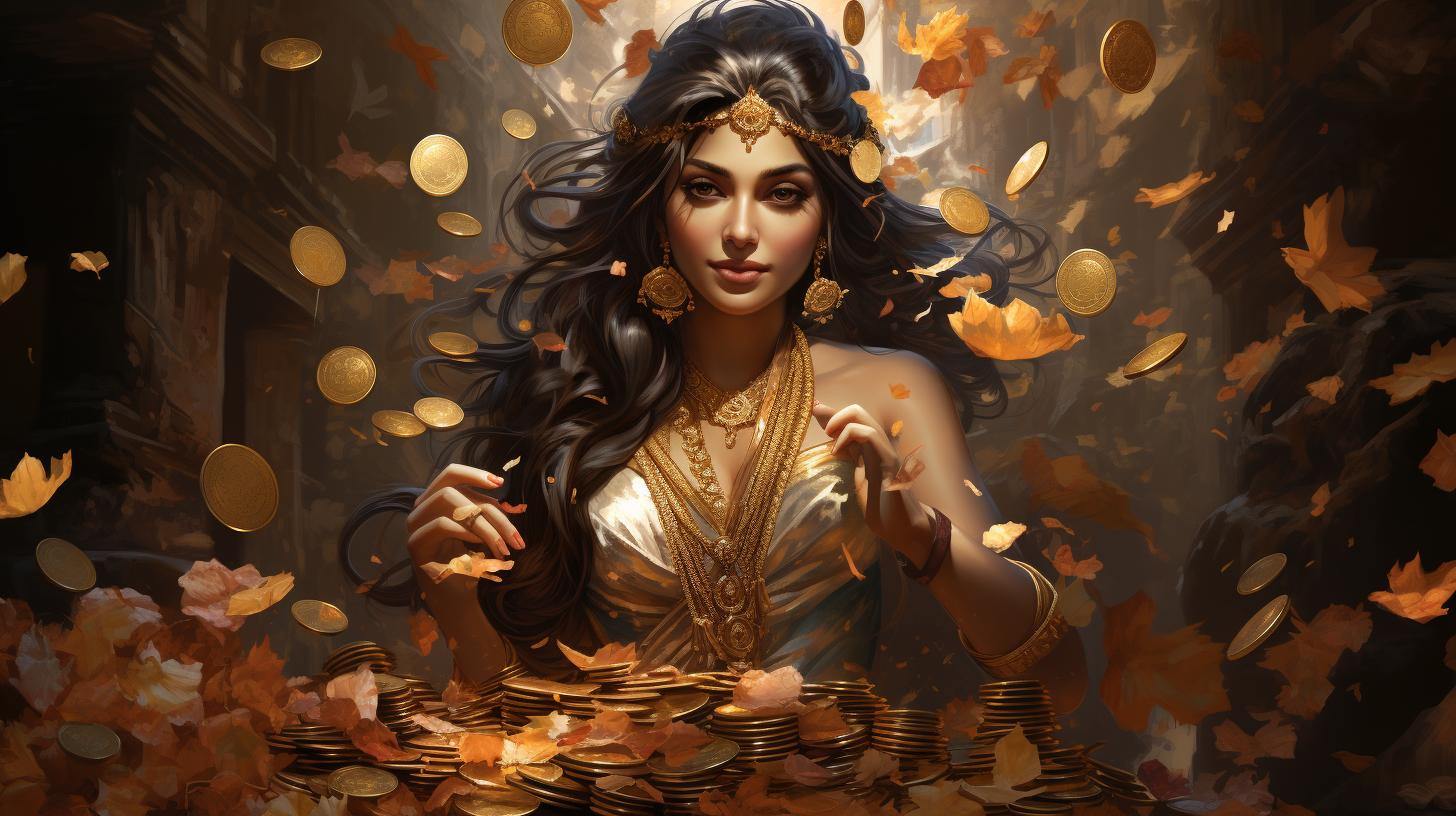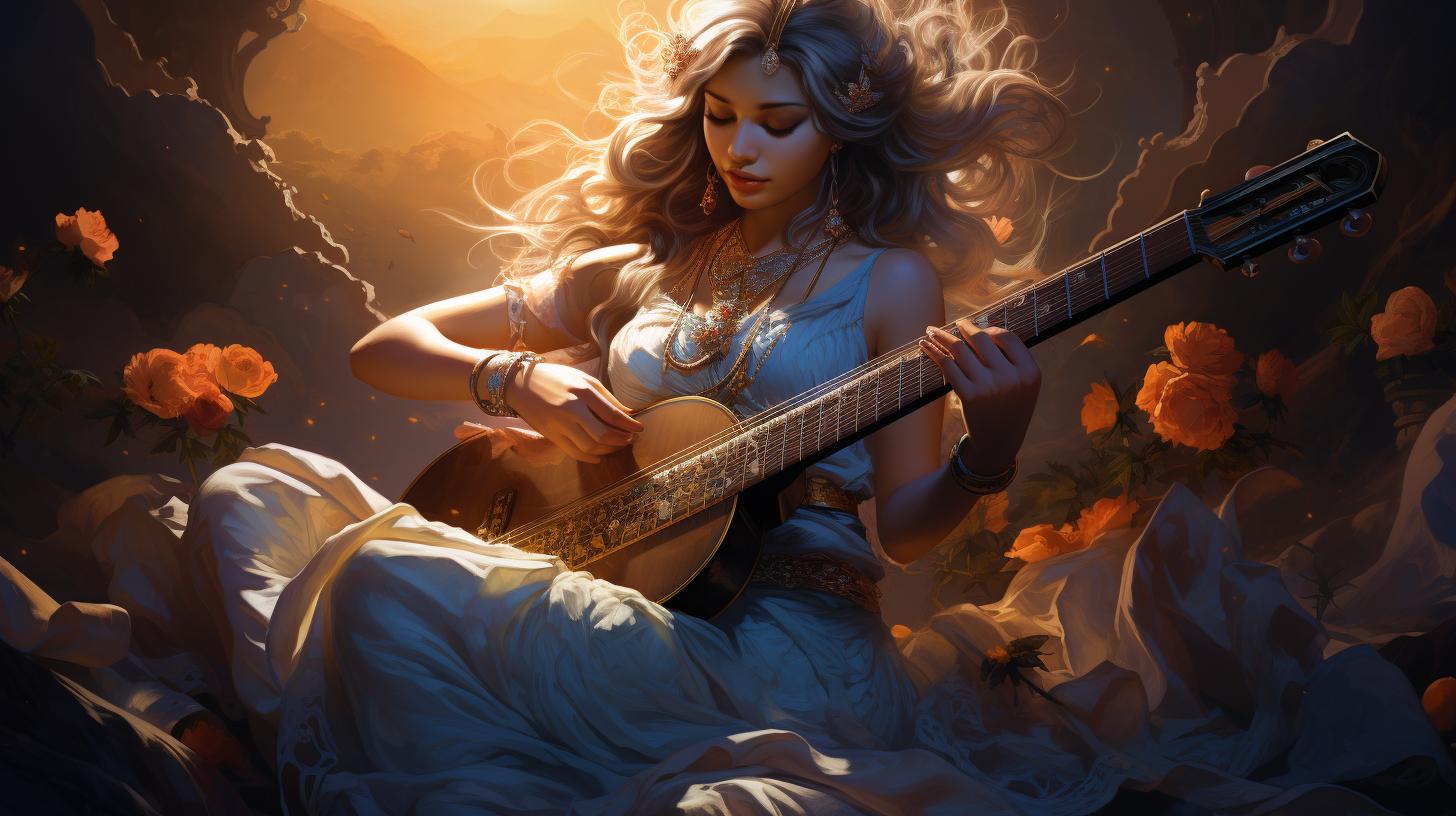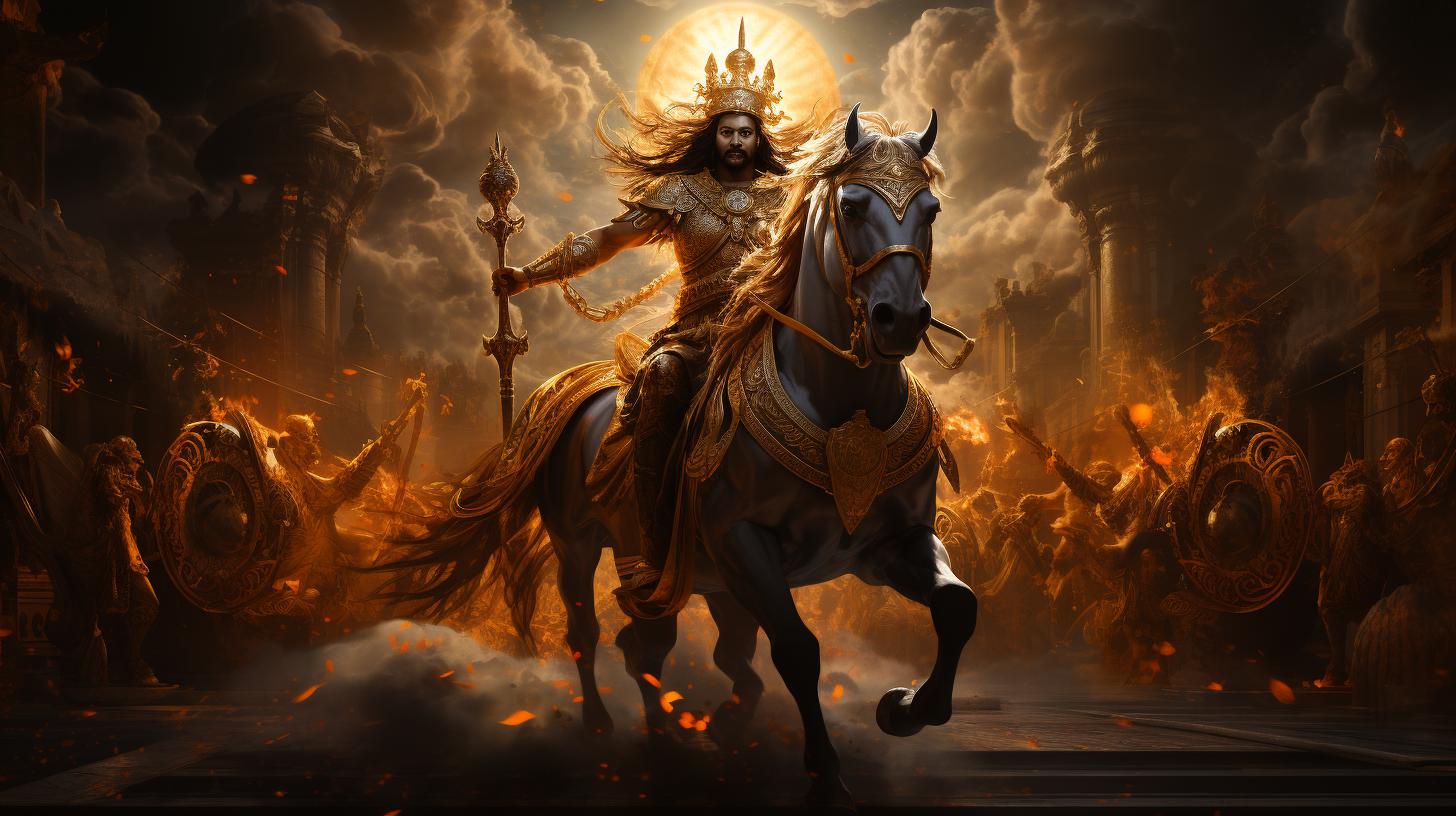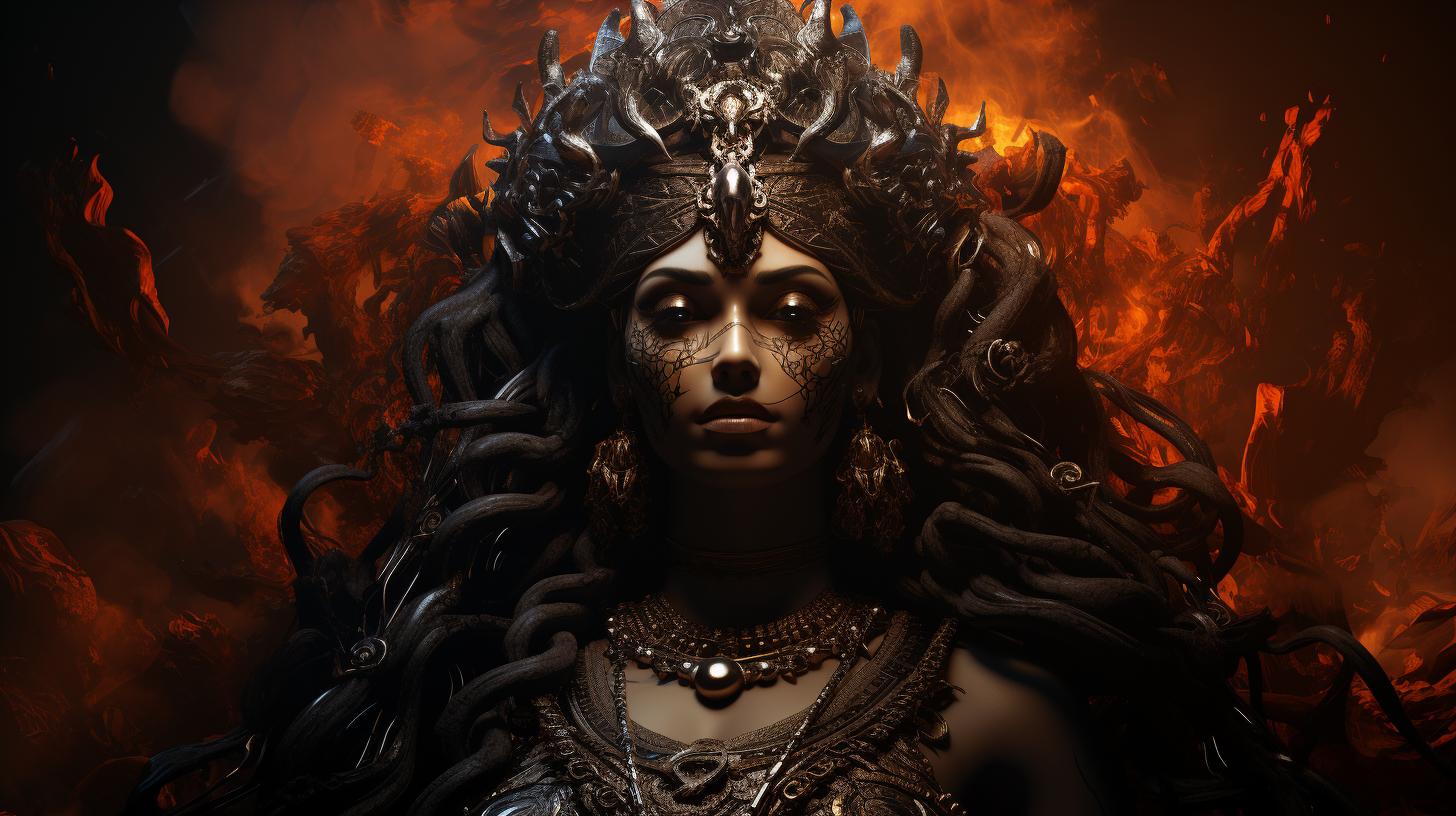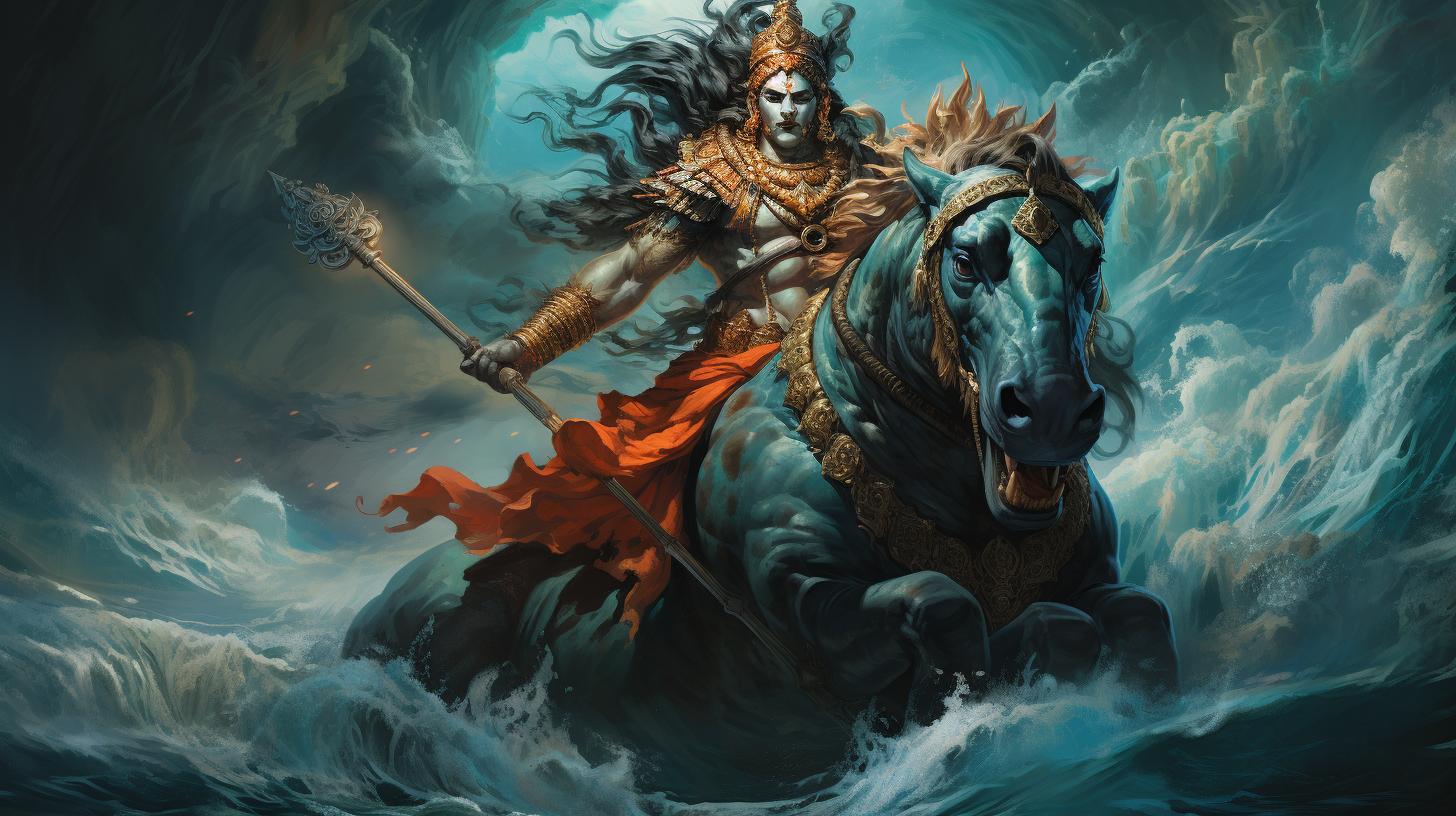‘Kartikeya Hindu God Story: The Epic Tale of the Warrior Deity in Hindu Mythology’
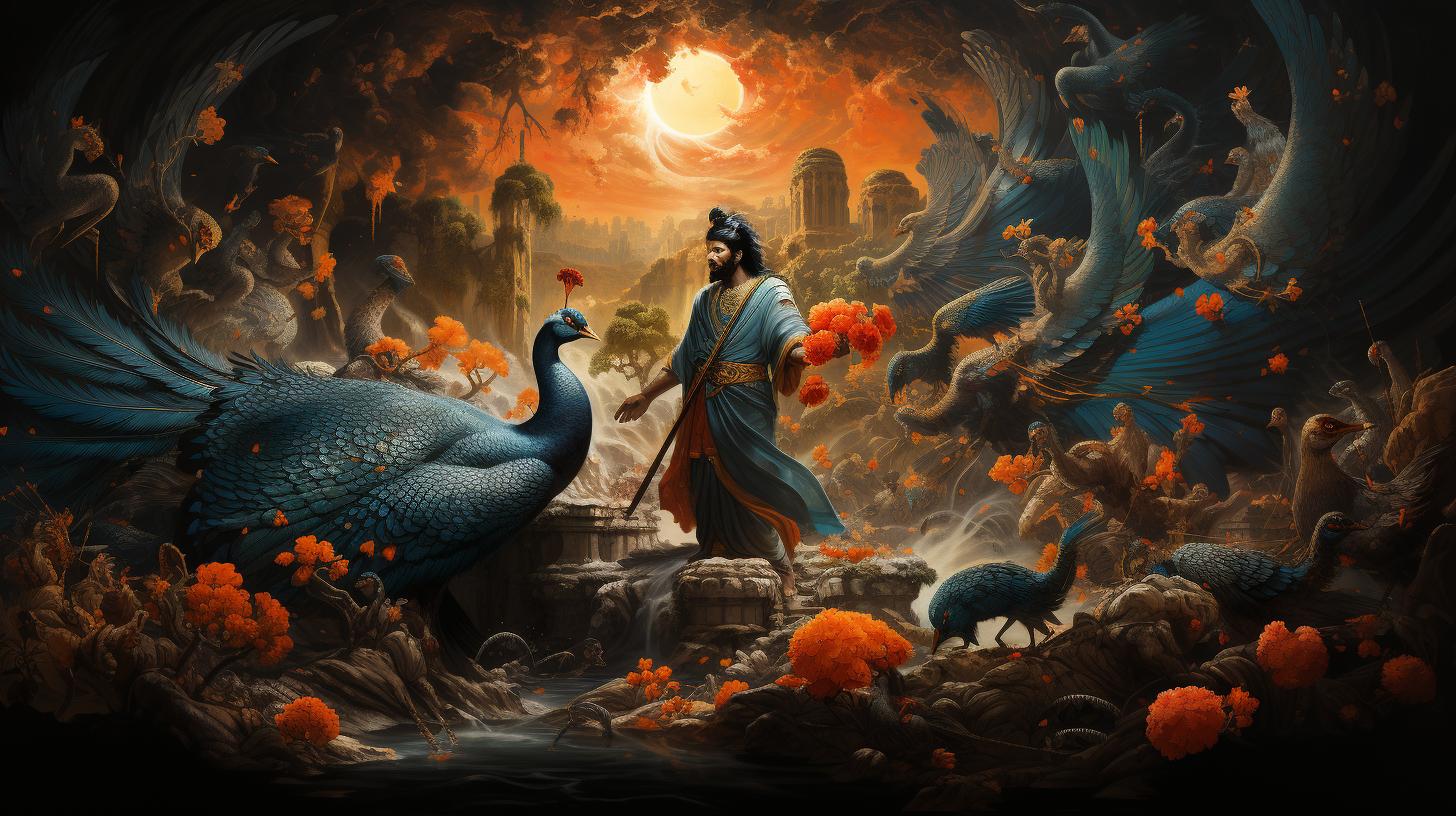
Kartikeya Hindu god story is a fascinating tale of the revered deity in Hindu mythology. Known as the god of war, Kartikeya is the son of Shiva and Parvati. With his energetic and youthful appearance, Kartikeya is often portrayed riding an Indian peacock and wielding a lance.
Apart from his martial prowess, Kartikeya also embodies spiritual significance, symbolizing the destruction of demon vices. Celebrated in festivals like Thaipusam and Skanda Sashti, Kartikeya’s worship is prominent in South India.
This article delves into Kartikeya’s origins, symbolism, worship, and influence in different religions and cultures.
The Origin of Kartikeya: Exploring the Birth of the Hindu War God
The birth of Kartikeya, the Hindu god of war, holds significant mythological importance in Hinduism. Let’s delve into the various aspects surrounding his birth and the legends associated with it.
The Mythological Significance of Kartikeya’s Birth
Kartikeya’s birth carries deep symbolism in Hindu mythology.
It represents divine intervention and the triumph of good over evil. The story highlights the fulfillment of a divine prophecy and the birth of a powerful warrior destined to eliminate evil forces.
Worship and Devotion: Temples Dedicated to Kartikeya
Temples dedicated to Kartikeya play a crucial role in Hindu worship, particularly in South India. These sacred sites attract devotees who seek blessings from the deity known for his valor and protection.
The temples offer a space for devotees to express their devotion and seek divine intervention.
The Legends and Stories Surrounding Kartikeya’s Birth
Kartikeya’s birth is accompanied by fascinating legends and stories that vary across different texts and regions. These narratives highlight the divine circumstances, celestial beings, and extraordinary events associated with his arrival.
The tales add depth to the mythology surrounding Kartikeya and captivate the imagination of believers.
The Role of Shiva and Parvati in Kartikeya’s Birth
Shiva and Parvati, the divine parents of Kartikeya, play a significant role in his birth. Their union signifies the balance of masculine and feminine energies, as well as the interconnectedness of the divine realm with the mortal world.
The story of their parenthood showcases their love, devotion, and divine purpose in bringing forth Kartikeya as the god of war.
Kartikeya in Hindu Mythology: His Symbolism and Attributes
Explore the profound symbolism and attributes of Kartikeya, the Hindu god of war. This section delves into the various aspects that make Kartikeya a significant figure in Hindu mythology.
Kartikeya as the God of War: Symbolism and Iconography
Discover the symbolic representation of Kartikeya as the god of war in Hindu tradition.
His energetic and youthful portrayal, riding the Indian peacock and wielding a lance, signifies his role as a fierce warrior who protects the devotees and vanquishes evil forces.
The Six Heads of Kartikeya: Interpretation and Meaning
Uncover the intriguing significance behind Kartikeya’s distinct feature – his six heads.
These heads symbolize the five senses along with the mind, emphasizing the importance of sensory control and mental discipline in leading an ethical life.
Kartikeya’s Role in the Spiritual Quest: Destroying the Demon Vices
Explore Kartikeya’s pivotal role in destroying the demon-like vices that plague human beings.
His divine purpose involves annihilating the six demonic tendencies, including desire, anger, greed, passion, ego, and jealousy, thus guiding individuals on their spiritual journey.
Other Aspects of Kartikeya’s Symbolism and Representation
Delve into the additional facets of Kartikeya’s symbolism and representation in Hindu mythology.
From his association with rejuvenation and valor to his multifaceted portrayal in ancient texts and scriptures, there is much to explore about this revered deity.
Kartikeya’s Worship and Festivals: Celebrating the Deity
Kartikeya, the revered Hindu god of war, is honored through various worship practices and celebrated in vibrant festivals.
This section delves into the significance of Kartikeya’s worship and the festivals dedicated to his divine presence.
Popular Kartikeya Temples: Exploring Sacred Sites
Across the regions where Kartikeya is worshipped, several temples dedicated to him stand as sacred sites filled with spiritual energy. These temples serve as centers of devotion and pilgrimage, attracting devotees from all walks of life.
The Significance of Thaipusam: A Festival Honouring Kartikeya
Thaipusam is a remarkable festival celebrated with great fervor to honor Kartikeya’s victory over evil forces. Devotees participate in processions, carry ornate kavadis (burdens), and engage in acts of devotion, including body piercings, as a demonstration of their faith and gratitude towards the deity.
Skanda Sashti: Commemorating the Warrior God’s Victory
Skanda Sashti, a six-day festival, commemorates Kartikeya’s triumph over the demon Surapadman. Devotees observe fasting, recite sacred hymns, and participate in processions to honor the deity’s victory and seek his blessings for protection and prosperity.
Rituals and Traditions: Celebrating Kartikeya’s Divine Presence
Various rituals and traditions have evolved over time to express devotion and reverence for Kartikeya. Devotees engage in daily prayers, offer flowers, incense, and sweets, and perform aarti (ceremonial worship) to invoke the deity’s divine presence and seek his blessings for guidance and blessings in their lives.
The worship and festivals surrounding Kartikeya are deeply rooted in the rich Hindu traditions, allowing devotees to connect with the divine and strengthen their spiritual bond with the deity. These sacred sites, festivals, and rituals serve as reminders of Kartikeya’s powerful presence and his role as a warrior god and guiding force.
Influence of Kartikeya in Other Religions and Cultures
Kartikeya, the revered Hindu god of war, holds significance not only within Hinduism but also in other religions and cultures. His influence can be seen in various ancient texts, scriptures, and religious practices across different traditions.
Here are some notable aspects of Kartikeya’s influence beyond Hindu mythology:
References to Kartikeya in Buddhism and Jainism
In both Buddhism and Jainism, Kartikeya finds mention, albeit with different interpretations. In Buddhism, he is referred to as Skanda and is considered a bodhisattva, a being who is on the path to enlightenment.
He represents courage and protection, often invoked for guidance in spiritual journeys.
Similarly, in Jainism, Kartikeya is recognized as an enlightened soul who has attained a high spiritual rank. He is known as Skanda Kumar and is revered as one of the sixty-three illustrious beings called “salakapurushas” in Jain cosmology.
Kartikeya in South Asian Countries: Sri Lanka, Singapore, Malaysia, and Mauritius
The influence of Kartikeya extends beyond India, particularly in South Asian countries with significant Hindu populations. In Sri Lanka, Kartikeya, known as Murugan, is revered as a guardian deity and has temples dedicated to him, most notably the ancient Kataragama temple.
Singapore, Malaysia, and Mauritius, which have substantial Tamil populations, also venerate Kartikeya. Thaipusam, a major festival celebrated in these countries, attracts devotees who undertake rigorous acts of devotion, such as carrying “kavadis” (decorated frameworks) and engaging in various rituals to express their devotion to Lord Murugan.
The Presence of Kartikeya in Ancient Texts and Scriptures
Kartikeya’s presence can be found in various ancient texts and scriptures, including the Mahabharata, Ramayana, Rig Veda, Skanda Purana, and Tamil literature. These texts narrate his heroic deeds, symbolize his divine attributes, and offer insights into his significance within the broader Hindu pantheon.
His depiction in these texts showcases Kartikeya as a symbol of valor, righteousness, and spiritual progress. Through his victories over demons and his association with the destruction of vices, he serves as a moral guide and a source of inspiration for devotees seeking spiritual transformation.
In conclusion, Kartikeya’s influence transcends the boundaries of Hindu mythology and extends to other religions and cultures. References to Kartikeya in Buddhism and Jainism, his veneration in South Asian countries, and his presence in ancient texts and scriptures highlight the enduring impact of this revered deity.
His representation as a figure embodying courage, protection, and spiritual evolution resonates with followers across different faiths and traditions.
Artistic Depictions of Kartikeya: Sculptures and Paintings
Art has long been a means of expressing devotion and capturing the essence of deities in Hindu culture. The artistic depictions of Kartikeya, the Hindu god of war, display intricate details and symbolize his various attributes.
Let us explore the rich heritage of sculptures and paintings that showcase the captivating beauty and symbolism associated with Kartikeya.
Exploring the Caves of Elephanta and Ellora: Kartikeya’s Iconography
The ancient caves of Elephanta and Ellora, located in India, are renowned for their stunning sculptures depicting Hindu deities. Within these caves, Kartikeya is often portrayed in grandeur, showcasing his essence as the god of war.
Adorned with his distinctive attributes, such as the lance, peacock mount, and multiple heads symbolizing his immense powers, these sculptures present a captivating visual narrative of Kartikeya’s significance in Hindu mythology.
Visual Representations of Kartikeya in Temples and Places of Worship
Temples dedicated to Kartikeya are adorned with intricate artwork showcasing the deity’s visual representations. From vibrant paintings to finely carved statues, these artistic depictions capture Kartikeya’s magnetic presence and invoke a sense of awe and reverence among devotees.
His youthful form, riding the majestic peacock and wielding his weapon, evokes a powerful aura that resonates with worshippers seeking blessings and protection.
The Significance of Kartikeya’s Mount: The Indian Peacock
Symbolism plays a crucial role in Hindu iconography, and Kartikeya’s mount, the Indian peacock, holds great significance. The peacock represents beauty, grace, and divinity in Hindu mythology. Its association with Kartikeya signifies his mastery over desires and represents the transcendence of materialistic tendencies.
The peacock’s vibrant plumage and regal presence in artistic depictions embody Kartikeya’s power and leadership qualities.
Kartikeya’s Role in Hindu Culture and Beliefs Today
Kartikeya, the revered Hindu god, continues to play a significant role in contemporary Hindu culture and beliefs. Here, we explore the practices, rituals, and significance of Kartikeya’s worship in today’s society as well as his devoted followers in America.
The Contemporary Worship of Kartikeya: Practices and Rituals
Devotees of Kartikeya engage in various practices and rituals to express their reverence and seek his blessings. Some common practices include performing puja (worship) at home or in temples dedicated to Kartikeya, reciting sacred chants and hymns, and offering flowers, fruits, and other symbolic items.
Specific rituals associated with Kartikeya’s worship include fasting, especially on Tuesdays, considered an auspicious day for him. Devotees may observe strict vegetarian diets during these fasts as a mark of respect for the deity.
Many also participate in processions and community gatherings during Kartikeya festivals to demonstrate their devotion.
Devotion and Veneration: Kartikeya’s Followers in America
Kartikeya has gained a notable following among Hindus residing in America. Temples dedicated to Kartikeya, established by Indian diaspora communities, provide a place for devotees to worship and connect with their cultural and religious roots.
The celebrations of Kartikeya festivals like Thaipusam and Skanda Sashti have also found resonance among the Hindu community in America. Devotees keenly participate in these festivals, embracing the rituals, processions, and performances to honor the warrior god.
Furthermore, Kartikeya’s teachings and symbolism are embraced not just by individuals of Indian origin but also by those with a keen interest in Hindu spirituality and mythology. His depiction as a powerful and just warrior deity resonates with the values and ideals of many Americans.
Significance of Kartikeya’s Teachings in Modern Life
The teachings of Kartikeya hold relevance in modern life, providing guidance for individuals seeking balance, courage, and spiritual growth. His role in the destruction of vices and negative tendencies within humans serves as a metaphor for overcoming personal challenges and inner demons.
Kartikeya exemplifies the virtues necessary for ethical and righteous living. His teachings emphasize the importance of self-discipline, integrity, bravery, and the pursuit of higher spiritual goals. By embodying these teachings, individuals can navigate the complexities of modern life while leading a life of purpose and integrity.
As society continues to evolve, the wisdom and mythology surrounding Kartikeya continue to inspire individuals to strive for personal growth, develop inner strength, and embrace their spiritual journey.
.











